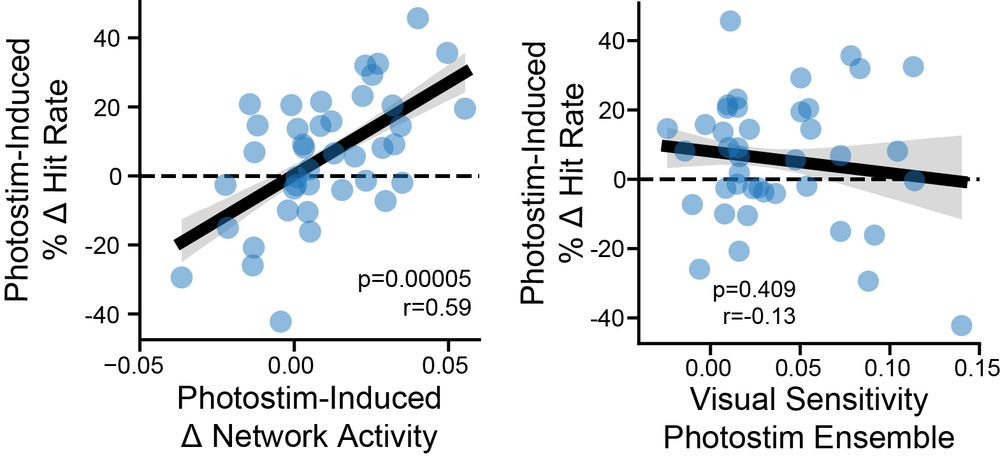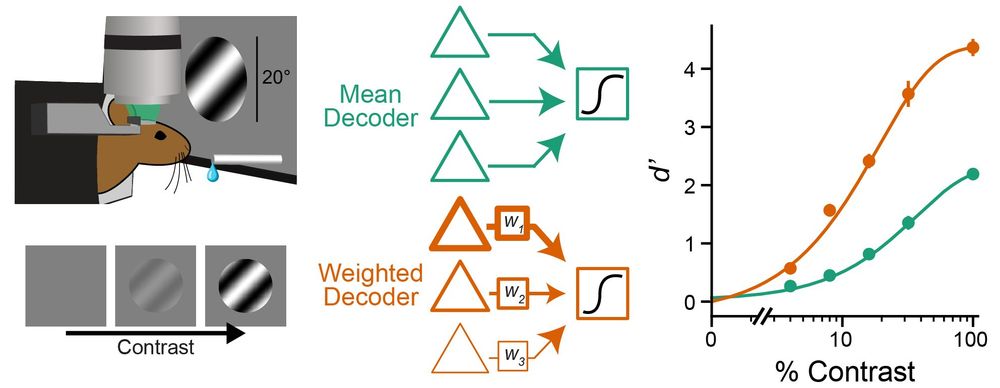Hayley Bounds
@hayleybounds.bsky.social
Systems/computational neuroscience postdoc @ Columbia in the Losonczy and Fusi labs. Schmidt Science Fellow. Formerly Adesnik lab @ UC Berkeley.
We found that the visual sensitivity of photostimulated ensembles did not predict the change in behavior - instead the overall impact on network activity (both directly via photostimulation and indirectly via recurrent impacts) was strongly predictive of behavioral change (4/5)

May 15, 2025 at 4:38 PM
We found that the visual sensitivity of photostimulated ensembles did not predict the change in behavior - instead the overall impact on network activity (both directly via photostimulation and indirectly via recurrent impacts) was strongly predictive of behavioral change (4/5)
If this more optimal strategy is used, photostimulating visually sensitive ensembles should more positively impact detection performance than photostimulating random ensembles. Using targeted optogenetics, we photostimulated ensembles with different visual sensitivity in behaving animals (3/5)

May 15, 2025 at 4:38 PM
If this more optimal strategy is used, photostimulating visually sensitive ensembles should more positively impact detection performance than photostimulating random ensembles. Using targeted optogenetics, we photostimulated ensembles with different visual sensitivity in behaving animals (3/5)
This is surprising because, although V1 responds monotonically to contrast, so an unweighted read out can solve contrast detection, more strongly weighting more visually sensitive neurons is much more optimal (2/5)

May 15, 2025 at 4:38 PM
This is surprising because, although V1 responds monotonically to contrast, so an unweighted read out can solve contrast detection, more strongly weighting more visually sensitive neurons is much more optimal (2/5)

